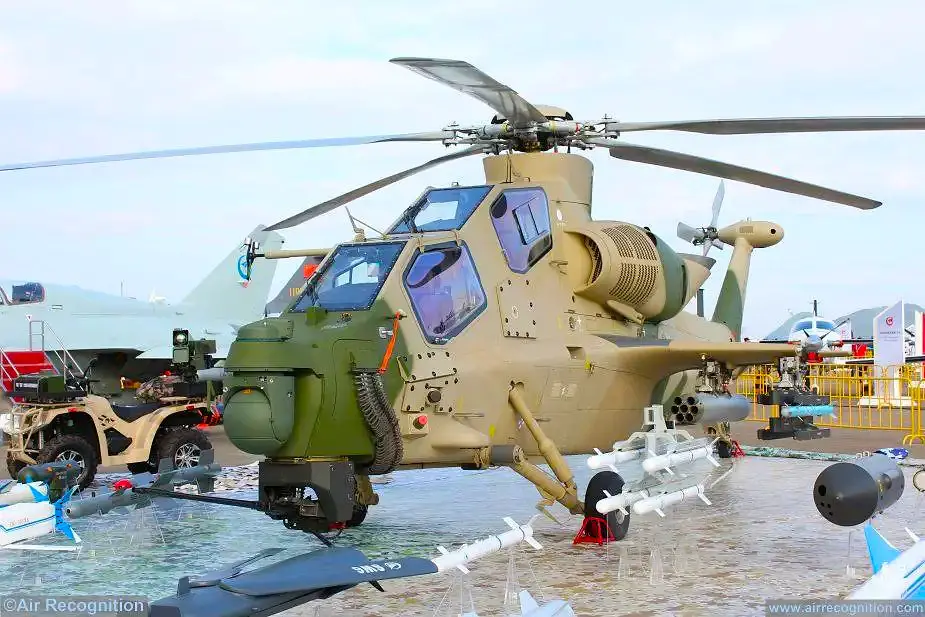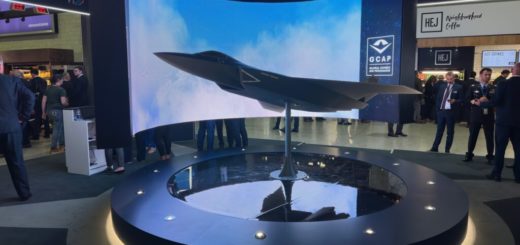Breaking News: Speculation over Chinese Z-10ME Attack Helicopter Delivery Hints at New Phase for Pakistan’s Air Power

{loadposition bannertop}
{loadposition sidebarpub}
On 7 July 2025, speculation over the delivery of Chinese-built Z-10ME attack helicopters to the Pakistani Army has triggered widespread debate about a potential shift in South Asia’s aerial combat capabilities. Reports of images and videos showing these helicopters in Pakistan have circulated across multiple social media platforms and were also reported by Defense Blog, yet neither China nor Pakistan has issued any official statement confirming such a delivery. This rumored deployment, if true, could represent a major leap in Pakistan’s efforts to modernize its rotary-wing fleet after earlier setbacks. The reports come at a time of evolving regional security dynamics, making the alleged delivery particularly significant for military observers.Follow Army Recognition on Google News at this link
The potential induction of the Z-10ME underscores a deeper defense alignment between Pakistan and Beijing. For Pakistan, the platform could strengthen its anti-armor and close air support capabilities along contested borders (Picture source: Army Recognition Group)
Developed by China’s AVIC (Aviation Industry Corporation of China), the Z-10ME is an advanced variant of the original Z-10 platform, featuring improved propulsion, upgraded composite armor, infrared suppression systems, and integrated electronic warfare suites. According to technical insights available on Army Recognition, the Z-10ME is tailored for high-intensity operations with enhanced survivability against modern anti-air threats. Its tandem cockpit configuration, 23mm chain gun, hardpoints for anti-tank missiles, and advanced targeting sensors provide multi-mission capabilities comparable to other frontline attack helicopters.
The Z-10 program has evolved since its introduction in the early 2000s, with multiple iterations tested and fielded by China’s People’s Liberation Army. Its development faced early technical hurdles, notably in engine performance, which Chinese engineers gradually resolved through domestic upgrades and foreign technology transfers. Pakistan’s interest in the Z-10 emerged as an alternative after its initial deal with Türkiye for T129 ATAK helicopters was stalled by U.S. export restrictions on engine components. The Z-10ME, with its tailored enhancements, now appears to fill this capability gap for the Pakistan Army, should the rumors prove true.
Compared to the T129 ATAK, the Z-10ME stands out with its integration of a more advanced electronic countermeasure suite and improved battlefield networking. While the T129 is optimized for hot and high conditions and has seen operational use in counter-insurgency, the Z-10ME’s design emphasizes survivability in conventional conflicts where advanced air defenses pose significant risks. In this sense, its conceptual evolution mirrors that of the AH-64 Apache, which has continually added new defensive systems to remain relevant on modern battlefields.
Strategically, the potential induction of the Z-10ME underscores a deeper defense alignment between Pakistan and Beijing. For Pakistan, the platform could strengthen its anti-armor and close air support capabilities along contested borders. Regionally, this move could prompt India to reassess its own rotary-wing modernization to maintain parity, amplifying the long-standing security dilemma in South Asia. For China, exporting the Z-10ME bolsters its position as an alternative supplier to countries facing Western export restrictions.
Although there is no confirmed contract value for this rumored batch, earlier statements and past export offers suggest that AVIC has been actively promoting the Z-10ME in Southeast Asia and Africa, positioning it as a cost-effective solution with lower logistical dependencies than Western equivalents. No recent official defense contract has been publicly announced between China and Pakistan for this variant, further fueling the speculation around the images circulating online.
While the reports remain unverified, the possibility that Pakistan is fielding the Z-10ME attack helicopter hints at Pakistan’s determination to overcome past procurement hurdles and reinforce its helicopter fleet with partners less constrained by Western export controls. Should an official confirmation follow, it could signal a new phase in Pakistan-China military cooperation and add another layer of complexity to the already volatile security landscape of South Asia.

{loadposition bannertop}
{loadposition sidebarpub}
On 7 July 2025, speculation over the delivery of Chinese-built Z-10ME attack helicopters to the Pakistani Army has triggered widespread debate about a potential shift in South Asia’s aerial combat capabilities. Reports of images and videos showing these helicopters in Pakistan have circulated across multiple social media platforms and were also reported by Defense Blog, yet neither China nor Pakistan has issued any official statement confirming such a delivery. This rumored deployment, if true, could represent a major leap in Pakistan’s efforts to modernize its rotary-wing fleet after earlier setbacks. The reports come at a time of evolving regional security dynamics, making the alleged delivery particularly significant for military observers.
Follow Army Recognition on Google News at this link
The potential induction of the Z-10ME underscores a deeper defense alignment between Pakistan and Beijing. For Pakistan, the platform could strengthen its anti-armor and close air support capabilities along contested borders (Picture source: Army Recognition Group)
Developed by China’s AVIC (Aviation Industry Corporation of China), the Z-10ME is an advanced variant of the original Z-10 platform, featuring improved propulsion, upgraded composite armor, infrared suppression systems, and integrated electronic warfare suites. According to technical insights available on Army Recognition, the Z-10ME is tailored for high-intensity operations with enhanced survivability against modern anti-air threats. Its tandem cockpit configuration, 23mm chain gun, hardpoints for anti-tank missiles, and advanced targeting sensors provide multi-mission capabilities comparable to other frontline attack helicopters.
The Z-10 program has evolved since its introduction in the early 2000s, with multiple iterations tested and fielded by China’s People’s Liberation Army. Its development faced early technical hurdles, notably in engine performance, which Chinese engineers gradually resolved through domestic upgrades and foreign technology transfers. Pakistan’s interest in the Z-10 emerged as an alternative after its initial deal with Türkiye for T129 ATAK helicopters was stalled by U.S. export restrictions on engine components. The Z-10ME, with its tailored enhancements, now appears to fill this capability gap for the Pakistan Army, should the rumors prove true.
Compared to the T129 ATAK, the Z-10ME stands out with its integration of a more advanced electronic countermeasure suite and improved battlefield networking. While the T129 is optimized for hot and high conditions and has seen operational use in counter-insurgency, the Z-10ME’s design emphasizes survivability in conventional conflicts where advanced air defenses pose significant risks. In this sense, its conceptual evolution mirrors that of the AH-64 Apache, which has continually added new defensive systems to remain relevant on modern battlefields.
Strategically, the potential induction of the Z-10ME underscores a deeper defense alignment between Pakistan and Beijing. For Pakistan, the platform could strengthen its anti-armor and close air support capabilities along contested borders. Regionally, this move could prompt India to reassess its own rotary-wing modernization to maintain parity, amplifying the long-standing security dilemma in South Asia. For China, exporting the Z-10ME bolsters its position as an alternative supplier to countries facing Western export restrictions.
Although there is no confirmed contract value for this rumored batch, earlier statements and past export offers suggest that AVIC has been actively promoting the Z-10ME in Southeast Asia and Africa, positioning it as a cost-effective solution with lower logistical dependencies than Western equivalents. No recent official defense contract has been publicly announced between China and Pakistan for this variant, further fueling the speculation around the images circulating online.
While the reports remain unverified, the possibility that Pakistan is fielding the Z-10ME attack helicopter hints at Pakistan’s determination to overcome past procurement hurdles and reinforce its helicopter fleet with partners less constrained by Western export controls. Should an official confirmation follow, it could signal a new phase in Pakistan-China military cooperation and add another layer of complexity to the already volatile security landscape of South Asia.






